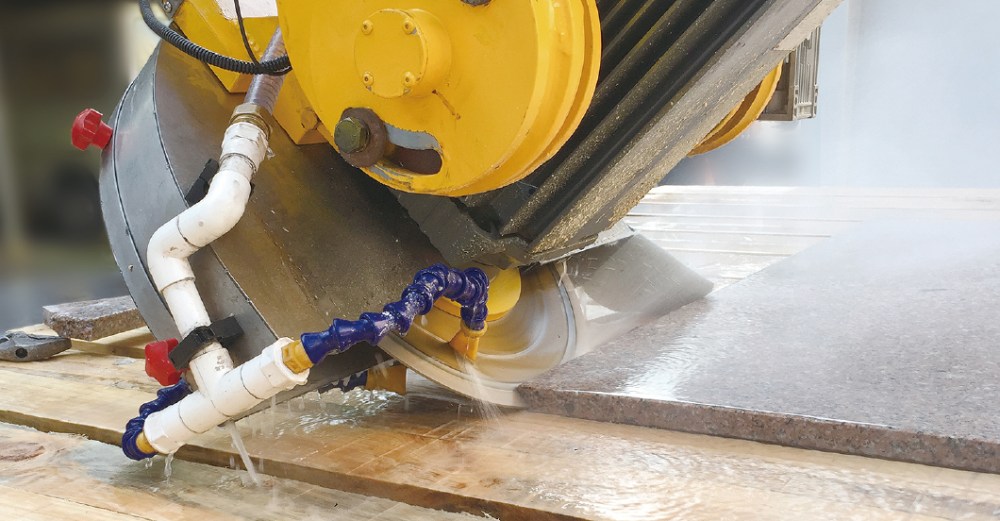Diamond saw blade in the use of a lot of skills, these skills can help us better use the saw blade, improve cutting efficiency.
1, idling: especially when the new substrate is used for the first time, it needs to be idled for about 30 minutes, and it also needs to be idled with water in the hot summer season, which is aimed at further eliminating the influence on the substrate when welding the segment and enhancing the memory of the saw blades to maintain the intrinsic quality under the state of high-speed rotation.
2, the barren material shall not be less than 0.5m³, and placed securely, the bottom surface should be padded with square wood, plug solid solid, the barren material should be located in the symmetrical position of the workbench to ensure that the work trolley and the barren material is stable, and shall not be shaken, shivering phenomenon.
3, Diamond saw blade using skills, according to the length, width, height of the barren material to adjust the travel switch, so that the saw blade lifting and the travel of the material car in a reliable and effective range. Before sawing, the saw blade should leave the highest 10-20mm from the barren material, after sawing, the saw blade should leave 20-40mm from the bottom of the barren material, before the saw blade goes to run around the knife frame, it should make the saw blade exit from the barren material, the distance should not be less than 150-200mm, in order to prevent the saw blade from hitting the barren material.
4, the saw blade idle stabilization before the test cut, not allowed to start the saw blade blade contact with the barren material, cutting is not allowed to stop the saw blade rotation, must exit the saw mouth before stopping.
5, When cutting, if you find that the barren material is shaking, you should stop cutting immediately, and continue to work only after the barren material is fixed firmly, and you are not allowed to move the barren material arbitrarily during cutting.
6, cutting saw blade is found to have obvious deceleration and even clamping phenomenon, it may be belt slippage, loose compression nut or eat knife depth is too large, go too fast and other reasons, should be adjusted in time.
7, the line speed should be compatible with the hardness and wear resistance of the processed stone, it is recommended to choose the following table line speed cutting different types of stone.
Tip: Increase the cutting efficiency when the line speed is not high, it will reduce the life of the saw blade.

8, the use of diamond saw blade skills, feed speed, mainly depends on the performance of the processed material, for each kind of material when the cutting depth of a certain range of feed speed, if the speed is too high, it will make the diamond to accelerate the wear and tear or even fall off, resulting in the consumption of the saw blade is too fast, if the speed is too low, then it will make the blade from the sharpening process can’t be carried out normally, so as to “wear blunt, slippery “Loss of cutting ability. In general, the feed speed should be slow when cutting, and should be even when sawing, for common typical materials, when the cutting depth is 20mm, the following feed speed table is recommended forr reference, when the thickness changes, the cutting speed can be converted by the cutting area (cm2/min).
9, the use of diamond saw blade skills, cutting depth for medium hardness of stone such as marble, limestone can be cut through once, for hard stone and abrasive such as granite, sandstone should be cut step by step, a single blade saw cutting granite, knife depth is generally 10-20mm, cutting marble knife depth of 50-100mm, multi-blade double sided cutting hard Granite, each time to eat the depth of 3-5mm, should be based on the hardness of the stone, the use of saw blades and stone cutting machine performance.
10, the direction of rotation of the saw blade and stone feeding direction is the same as the smooth cutting, and vice versa for reverse cutting, and reverse cutting, because there is an upward vertical force, the formation of the potential to lift the stone, so in order to stabilize the stone, in the same conditions, should be used as far as possible with the smooth cutting. When the reverse cut, the cutting depth should be reduced, generally reduced to 1/3-1/2 of the smooth cut.
 WANLONG
WANLONG
